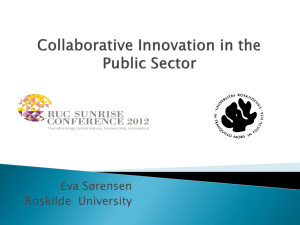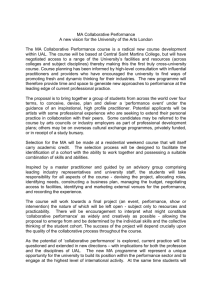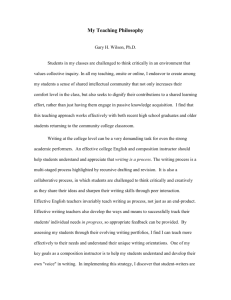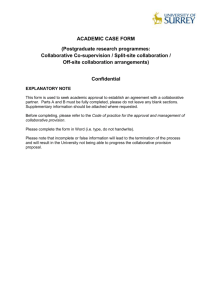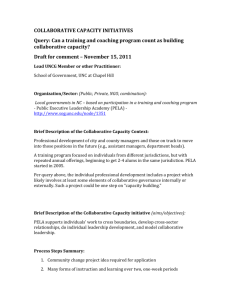Krogh & Torfing - Leading Collaborative Innovation: New
advertisement
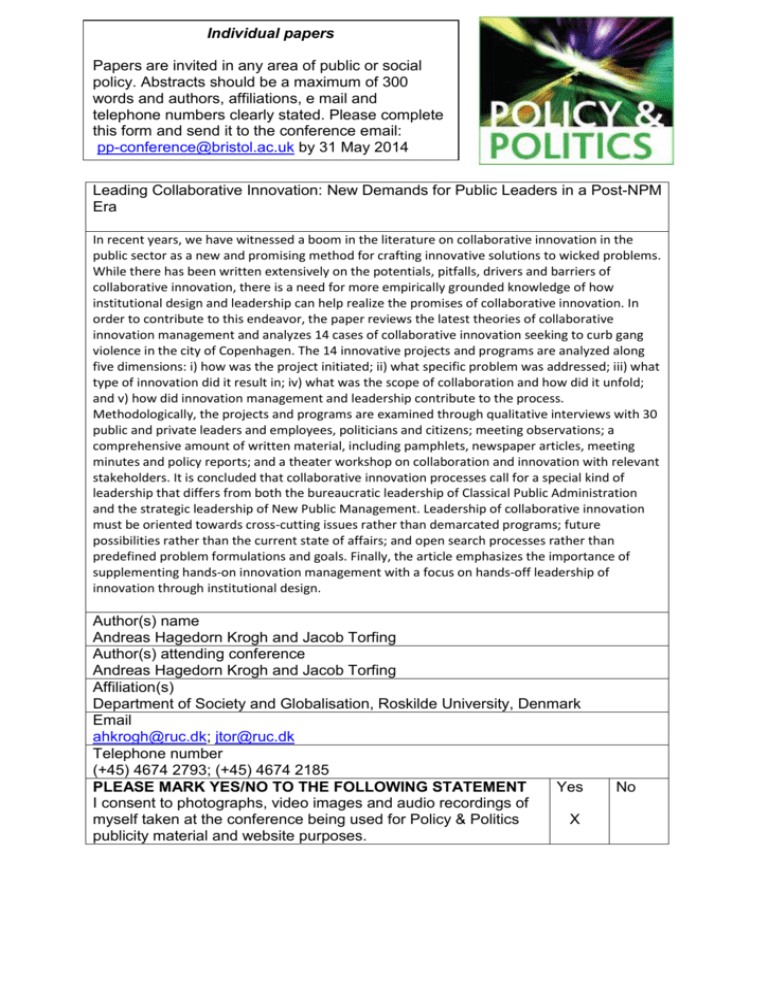
Individual papers Papers are invited in any area of public or social policy. Abstracts should be a maximum of 300 words and authors, affiliations, e mail and telephone numbers clearly stated. Please complete this form and send it to the conference email: pp-conference@bristol.ac.uk by 31 May 2014 Leading Collaborative Innovation: New Demands for Public Leaders in a Post-NPM Era In recent years, we have witnessed a boom in the literature on collaborative innovation in the public sector as a new and promising method for crafting innovative solutions to wicked problems. While there has been written extensively on the potentials, pitfalls, drivers and barriers of collaborative innovation, there is a need for more empirically grounded knowledge of how institutional design and leadership can help realize the promises of collaborative innovation. In order to contribute to this endeavor, the paper reviews the latest theories of collaborative innovation management and analyzes 14 cases of collaborative innovation seeking to curb gang violence in the city of Copenhagen. The 14 innovative projects and programs are analyzed along five dimensions: i) how was the project initiated; ii) what specific problem was addressed; iii) what type of innovation did it result in; iv) what was the scope of collaboration and how did it unfold; and v) how did innovation management and leadership contribute to the process. Methodologically, the projects and programs are examined through qualitative interviews with 30 public and private leaders and employees, politicians and citizens; meeting observations; a comprehensive amount of written material, including pamphlets, newspaper articles, meeting minutes and policy reports; and a theater workshop on collaboration and innovation with relevant stakeholders. It is concluded that collaborative innovation processes call for a special kind of leadership that differs from both the bureaucratic leadership of Classical Public Administration and the strategic leadership of New Public Management. Leadership of collaborative innovation must be oriented towards cross-cutting issues rather than demarcated programs; future possibilities rather than the current state of affairs; and open search processes rather than predefined problem formulations and goals. Finally, the article emphasizes the importance of supplementing hands-on innovation management with a focus on hands-off leadership of innovation through institutional design. Author(s) name Andreas Hagedorn Krogh and Jacob Torfing Author(s) attending conference Andreas Hagedorn Krogh and Jacob Torfing Affiliation(s) Department of Society and Globalisation, Roskilde University, Denmark Email ahkrogh@ruc.dk; jtor@ruc.dk Telephone number (+45) 4674 2793; (+45) 4674 2185 PLEASE MARK YES/NO TO THE FOLLOWING STATEMENT Yes I consent to photographs, video images and audio recordings of myself taken at the conference being used for Policy & Politics X publicity material and website purposes. No

